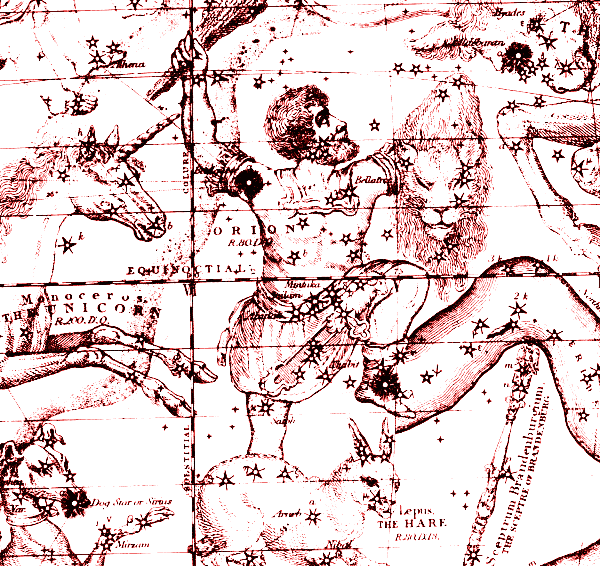| This page is also available in Swedish (translation provided by Daniela Milton) | |
 |
Every
culture has its own constellations and mythology. Constellations rarely
look like the object their name suggests; many groupings of stars have
been called different things over the years.
According to Greek mythology, the stars in this region of the sky are labeled Orion in honor of a great hunter, son of Neptune and the nymph Eurayle. The drawing at left, from E. Burritt's atlas of 1835, shows the typical image of Orion -- club in hand, lion-skin shield, attacking the bull, Taurus. To the Egyptians, the same stars were a tribute to the god of light, Osiris. Other cultures saw such things as a turtle or octopus. Some cultures combined these stars and others into larger figures like a Cayman or alligator-like creature. Others saw subsets of the stars as individual figures.
|
|
Orion is probably one of the easiest constellations to find. From the mid-latitudes of the northern hemisphere, in January at about 9:00 PM , look due south and half way between horizon and zenith. There, you will see three bright stars in a row that make up the belt of the mythical hunter. To the north-north west of the belt, you'll see one bright, slightly red star, Betelgeuse, that artists draw as the hunter's right shoulder. Other bright stars mark his left shoulder, his right knee and raised left foot. Below his belt on a clear night you might make out the reddish glow of the Orion Nebula, part of Orion's sword. |

